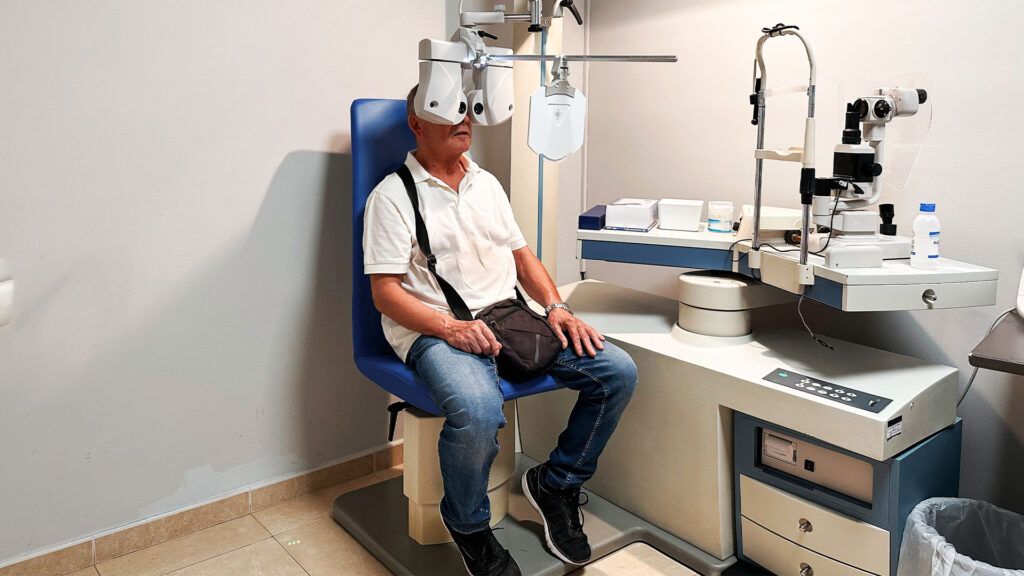Retinal tears can result from age-related changes to the eye, trauma and injuries, and complications from eye surgery.
Retinal tears are a vision-disrupting condition that can affect the clarity of sight.
The retina is a fragile tissue lining the back of the eye responsible for capturing light and enabling vision. When it becomes damaged or torn, a person can experience vision problems, from blurriness and distortion to partial or complete vision loss in affected areas.
Other than direct injury to the eye, retinal tears can sometimes occur spontaneously. Certain risk factors, such as advanced age and family history, can contribute to retinal tear development.
This article explores retinal tear causes and risk factors, helping individuals protect their eyesight and make informed decisions about their eye health.

PVD is a natural process. As a person ages, the clear gel-like substance in the eye, known as the vitreous, separates from the retina. In most cases, this separation occurs without any issues.
However, in some individuals — especially those with a vitreous that sticks more to the retina — the gel can pull on the retina as it detaches, leading to a retinal tear.
Symptoms of PVD can include:
- sudden appearance of floaters, which are tiny specks or cobweb-like shapes in the field of vision
- flashes of light (photopsia)
- blurred vision
A related entity to PVD is retinal holes. Some doctors use the terms retinal tears and holes interchangeably, but they are different. Retinal holes tend to develop due to progressive thinning of the retina rather than the vitreous pulling on the retina. Also, they are typically smaller than tears and are less likely to lead to retinal detachment.
Eye injuries that involve blunt trauma or direct impact on the eye can
When the eye experiences a forceful injury, it can cause the delicate retina to tear. This could occur in situations like:
- motor vehicle accidents
- sport-related injuries
- accidental falls
If someone experiences an eye injury, they should seek immediate medical evaluation. Addressing retinal tears promptly increases the likelihood of a positive outcome.
While doctors may perform eye surgery to address eye conditions and improve vision, these procedures also carry a potential risk of causing retinal tears.
Surgical procedures —
Research suggests that certain people have an increased risk of retinal tears following cataract surgery. This includes individuals with less advanced cataracts before surgery, those with complications during the surgery, and eyes with longer axial (front to back) lengths. Long axial lengths are present in high myopia (nearsightedness).
Because of these risks, doctors should carefully counsel people before surgery so they know what issues to look out for. People should also have appropriate follow-up care.
Several risk factors may increase the likelihood of developing a retinal tear. They include:
- previous eye surgery or injury
- having a family history of retinal tears or retinal detachment
- advanced age
- having nearsightedness (myopia)
- certain eye diseases, such as lattice degeneration or diabetic retinopathy
- certain medications, such as drugs that make the pupil small — like glaucoma medication pilocarpine
Below are some commonly asked questions about retinal tears:
Can a retinal tear happen suddenly?
Yes, retinal tears can happen suddenly, with symptoms manifesting unexpectedly.
Anyone experiencing sudden flashing lights, shadows, or other visual symptoms should see an ophthalmologist immediately to limit damage and reduce the risk of a detached retina and vision loss.
What is the most common cause of retinal tear?
The most common cause of retinal tears is posterior vitreous detachment (PVD), where the eye’s vitreous gel
Doctors find retinal tears in around 8–22% of people with acute symptomatic PVD have retinal tears. These tears are typically located in the superotemporal quadrant of the retina, which is the upper outer quarter of the eye.
What is the most common cause of retinal detachment?
Retinal detachment is a serious eye condition where the retina becomes separated or detached from its underlying tissue. When this occurs, it disrupts the normal flow of nutrients and oxygen to the retina, which can lead to a rapid loss of vision without prompt treatment.
There are various causes of retinal detachment, but the
Retinal tears can result from various causes, including PVD, eye injuries, and eye surgery. They can cause visual disturbances and lead to serious eye problems if left untreated.
Certain risk factors can also contribute to retinal tear development. These include aging, previous eye surgery, and having a family history of eye problems like retinal tears or detachment.
If a person develops symptoms such as floaters, flashes of light, or vision changes, they should seek immediate medical advice to prevent potential vision loss and address retinal tears effectively.
